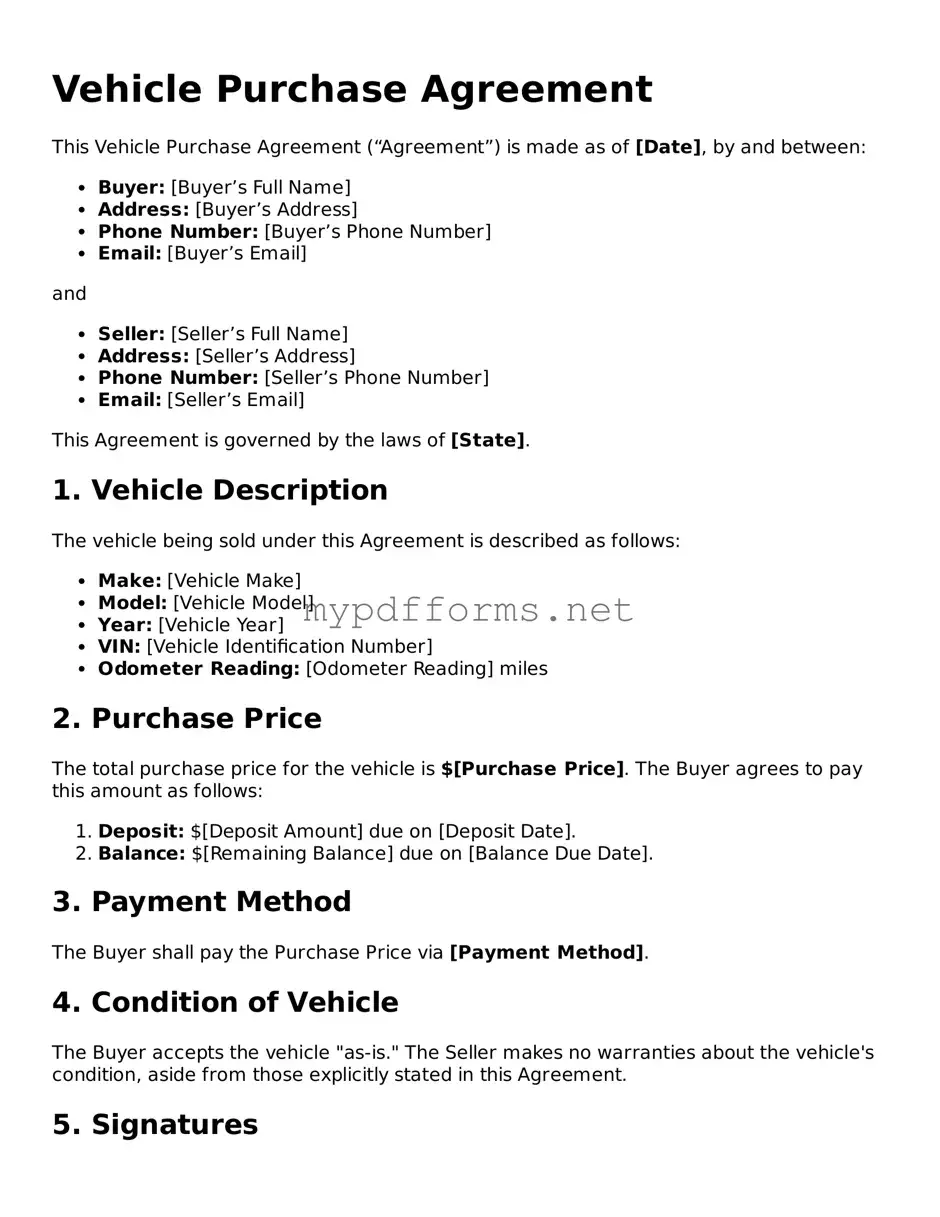The Bill of Sale is a document that serves as proof of a transaction between a buyer and a seller. Like the Vehicle Purchase Agreement, it outlines the details of the sale, including the purchase price, the description of the vehicle, and the identities of both parties involved. This document can be used to transfer ownership legally and is often required for registration purposes. Both documents aim to establish a clear record of the sale, ensuring that both parties understand their rights and responsibilities.
The Purchase Order is another document that shares similarities with the Vehicle Purchase Agreement. It is commonly used in business transactions to confirm the purchase of goods or services. Much like the Vehicle Purchase Agreement, it includes details such as the item description, quantity, and price. This document serves as a formal request from the buyer to the seller, establishing the terms of the sale before the actual transaction occurs. Both documents are essential for maintaining clear communication and expectations between the parties involved.
The Lease Agreement is comparable to the Vehicle Purchase Agreement in that it outlines the terms of use for a vehicle, though it typically pertains to rental situations rather than outright purchase. This document specifies the duration of the lease, payment terms, and responsibilities for maintenance. Similar to the Vehicle Purchase Agreement, it aims to protect the interests of both parties by clearly defining the terms of the arrangement, ensuring that both the lessor and lessee understand their obligations.
The Financing Agreement is another document that parallels the Vehicle Purchase Agreement, especially when the vehicle is being financed. This document outlines the terms of the loan, including the interest rate, payment schedule, and any penalties for late payments. Like the Vehicle Purchase Agreement, it is crucial for establishing the financial obligations of the buyer. Both documents are essential in facilitating the purchase process, ensuring that the buyer can secure the necessary funds while also understanding their repayment responsibilities.
In New Jersey, the Bill of Sale form is essential not only for vehicle transactions but also for various sales agreements, as it provides a clear record of ownership transfer. For seamless access to necessary documentation and to ensure all forms are up-to-date, you can visit NJ PDF Forms, which offers a range of resources to facilitate this process.
The Warranty Agreement is similar to the Vehicle Purchase Agreement in that it provides assurances regarding the vehicle's condition and performance. This document outlines the coverage provided, the duration of the warranty, and the conditions under which claims can be made. Both agreements aim to protect the buyer's investment by ensuring that they receive a vehicle that meets certain standards. They also help to clarify what recourse is available should issues arise after the purchase.
The Title Transfer Document is closely related to the Vehicle Purchase Agreement as it is necessary for the legal transfer of ownership. This document includes details such as the vehicle identification number (VIN), the names of the buyer and seller, and the date of the transaction. Similar to the Vehicle Purchase Agreement, it is essential for ensuring that the buyer is recognized as the new owner of the vehicle. Both documents work together to facilitate a smooth transition of ownership and to meet legal requirements for vehicle registration.
